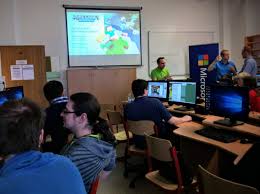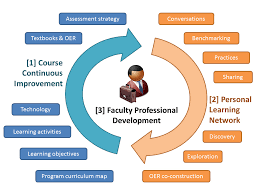Unlock Postsecondary Education: A Quick Guide
Table of Contents
Pursuing postsecondary education is a significant step towards achieving your career goals and personal growth. Whether you’re a high school graduate, a working adult, or someone seeking a career change, understanding how to navigate the path to higher education is essential. This quick guide will help you unlock the opportunities that postsecondary education offers.
Understanding Postsecondary Education
Postsecondary education refers to any form of education that occurs after high school, including community colleges, universities, vocational schools, and technical institutes. This education can lead to various degrees and certifications, such as associate’s degrees, bachelor’s degrees, diplomas, or professional certifications.
Choosing the Right Path
1. Identify Your Goals
Before you embark on your educational journey, it’s crucial to identify your goals. Are you aiming for a specific career? Do you want to gain new skills or advance in your current job? Understanding your objectives will help you choose the right type of institution and program.
2. Explore Your Options
Postsecondary education comes in many forms:
- Community Colleges: Offer two-year associate’s degrees and certificates, often at a lower cost than universities.
- Universities: Provide bachelor’s, master’s, and doctoral degrees in a wide range of fields.
- Vocational and Technical Schools: Focus on specific trades or professions, offering hands-on training and certifications.
- Online Programs: Allow you to study from anywhere, providing flexibility for working professionals or those with other commitments.
3. Research Programs and Institutions
Once you’ve identified your goals, research the programs and institutions that align with them. Look into the curriculum, faculty, facilities, and student support services. Consider factors such as location, tuition costs, and accreditation to ensure you choose a reputable institution.
Financial Planning for Postsecondary Education
1. Understand the Costs
Postsecondary education can be expensive, but understanding the costs involved is the first step towards financial planning. These costs include tuition, fees, books, supplies, and living expenses.
2. Explore Financial Aid Options
There are various financial aid options available to help you fund your education:
- Grants and Scholarships: These are funds that don’t need to be repaid and are often based on merit or financial need.
- Student Loans: These are borrowed funds that must be repaid with interest. Federal loans typically offer lower interest rates and more flexible repayment options than private loans.
- Work-Study Programs: These programs allow students to work part-time while attending school, helping to offset education costs.
3. Budgeting and Planning
Create a budget that accounts for all your educational expenses. Consider working part-time or saving money before starting your program to reduce the financial burden. Look into payment plans offered by institutions that allow you to spread out tuition payments.
Navigating the Admissions Process
1. Prepare Your Application
Applying to postsecondary institutions often requires submitting several documents, including transcripts, letters of recommendation, and personal statements. Ensure your application is complete, accurate, and submitted by the deadlines.
2. Entrance Exams
Some programs require standardized tests such as the SAT, ACT, GRE, or GMAT. Research the requirements for your desired program and prepare accordingly. Many resources are available, including prep courses and practice exams, to help you succeed.
3. Interview Process
Some institutions or programs may require an interview as part of the admissions process. Practice your interview skills, research the institution, and be ready to discuss your goals and why you’re a good fit for the program.
Making the Most of Your Postsecondary Education
1. Engage in the Experience
Take full advantage of your postsecondary education by engaging with your coursework, participating in extracurricular activities, and connecting with faculty and peers. Networking can open doors to internships, job opportunities, and mentorship.
2. Seek Support Services
Most institutions offer a range of support services, including academic advising, career counseling, tutoring, and mental health services. Don’t hesitate to seek help when needed to ensure your success.
3. Plan for the Future
As you progress through your education, start planning for your post-graduation goals. This might include applying for jobs, pursuing further education, or starting a business. Use your institution’s career services to help with resume writing, job searches, and interview preparation.
Conclusion
Unlocking the potential of postsecondary education can pave the way for personal and professional success. By carefully planning your educational journey, understanding your financial options, and fully engaging in the experience, you can achieve your goals and open new opportunities for your future. Start today, and take the first step towards a brighter tomorrow.










